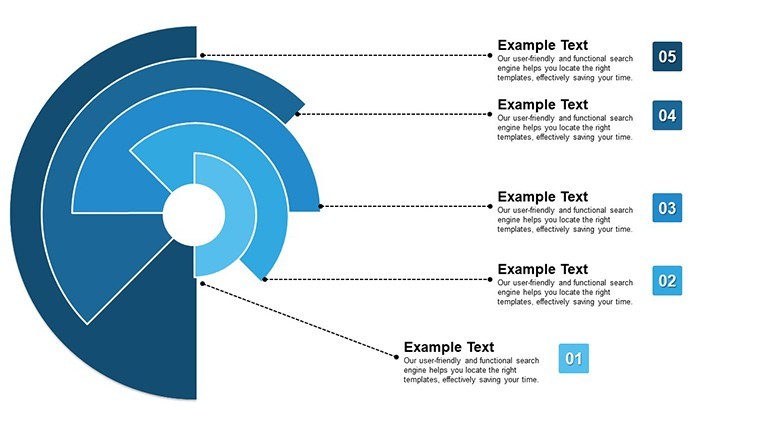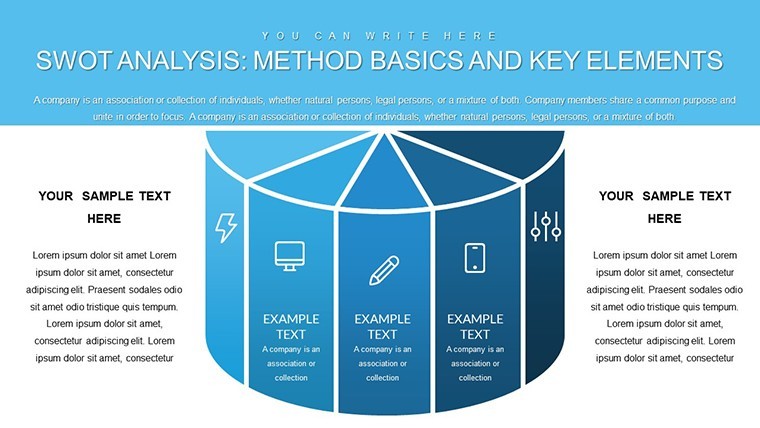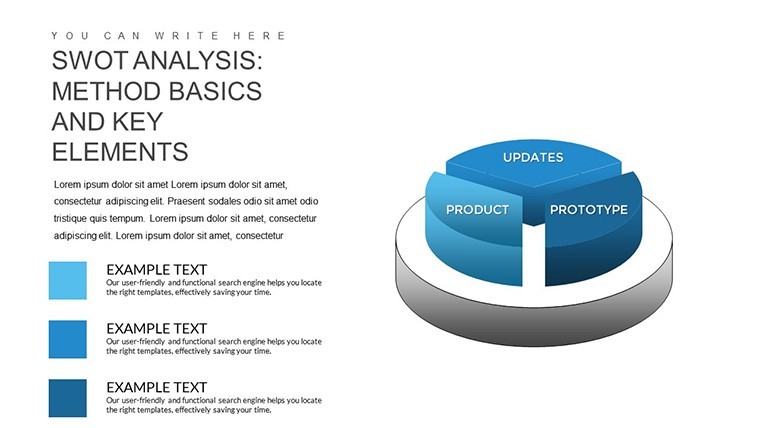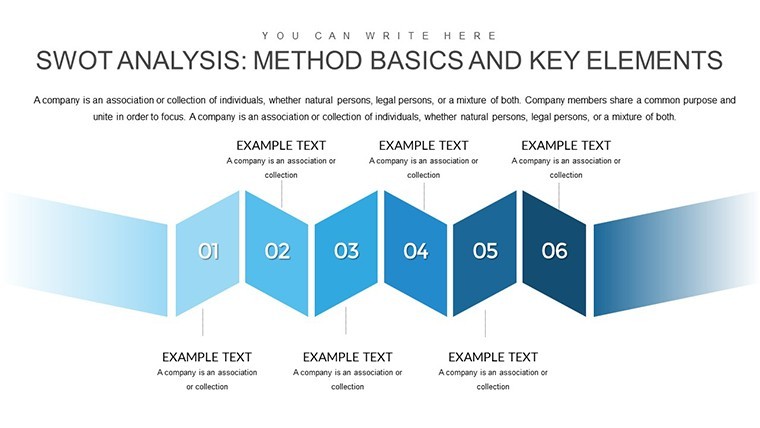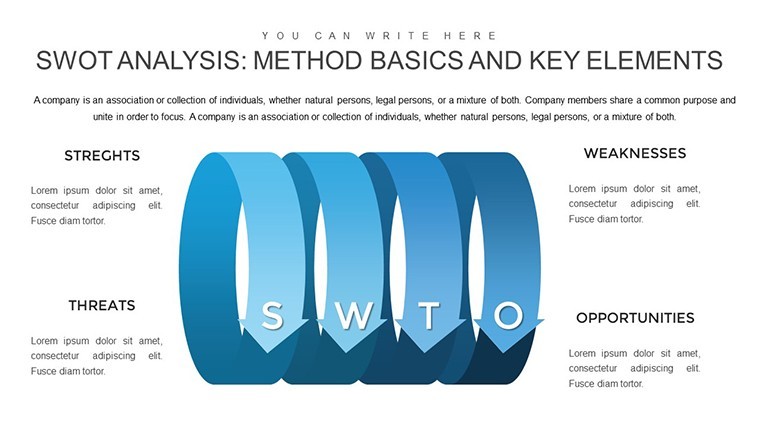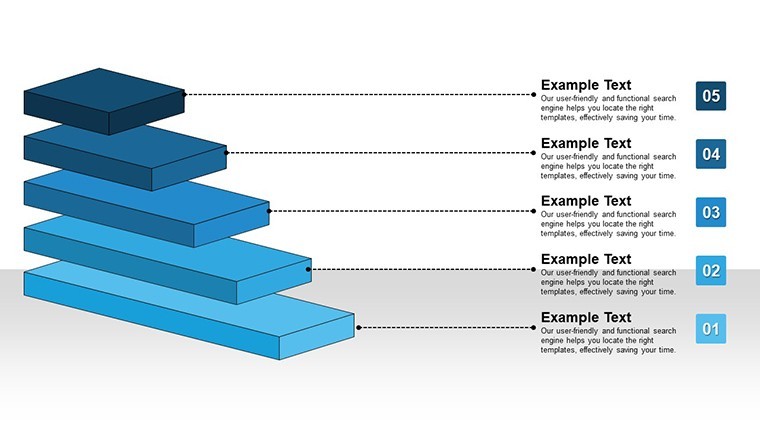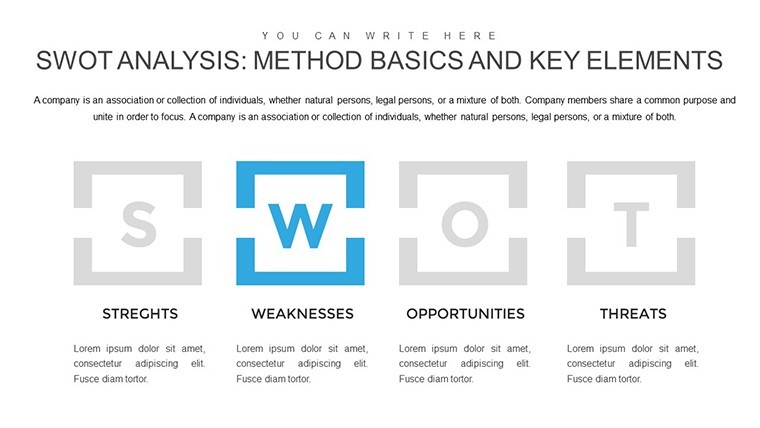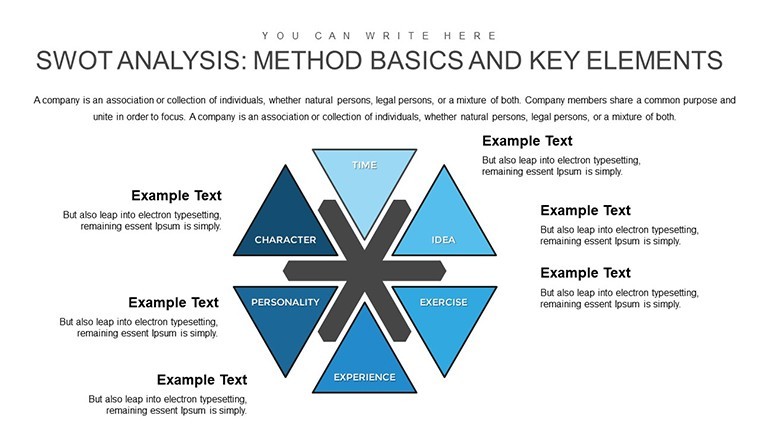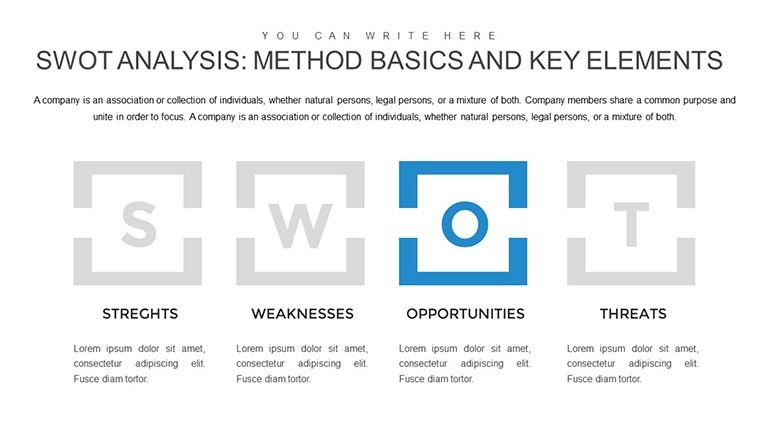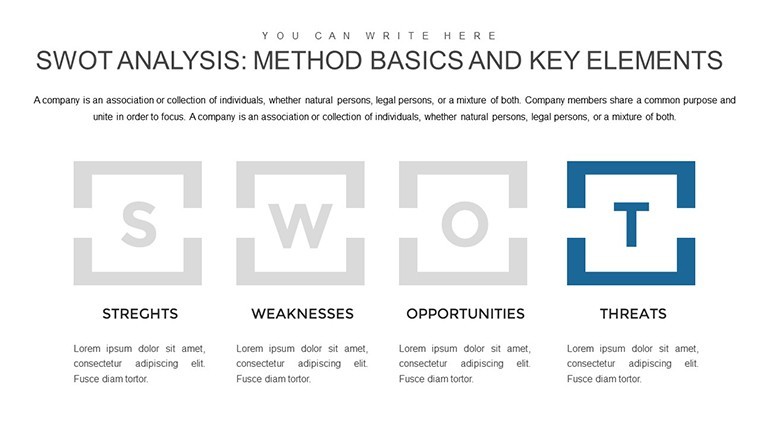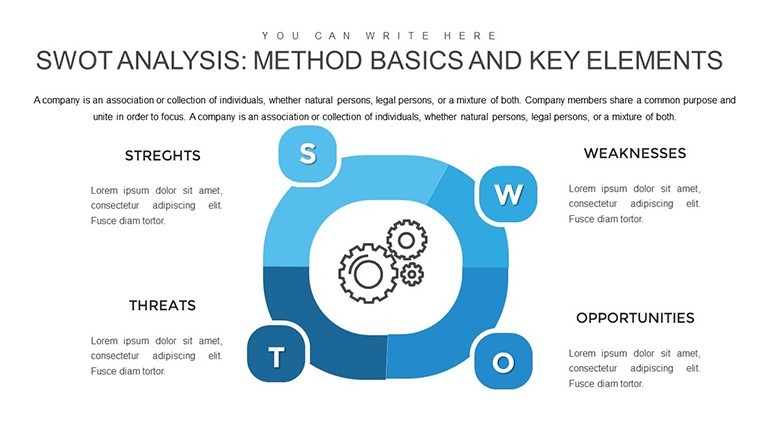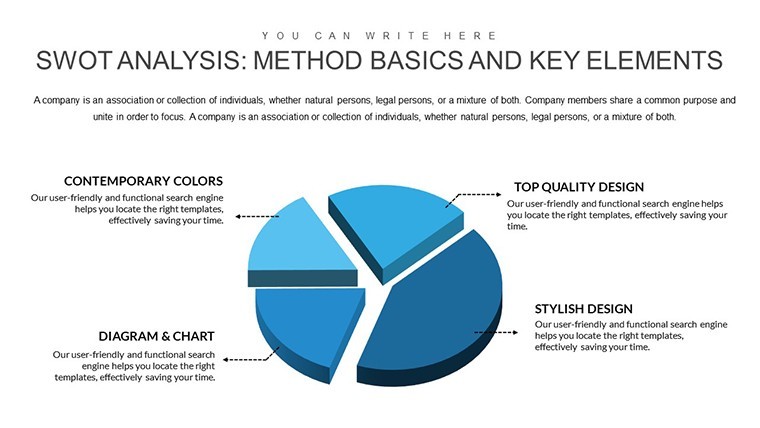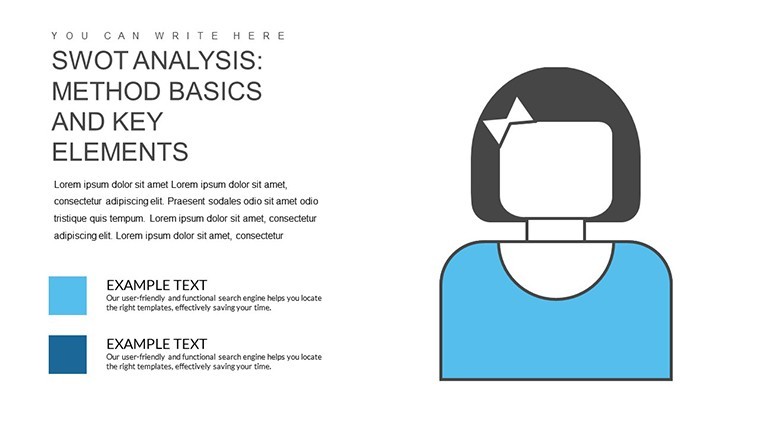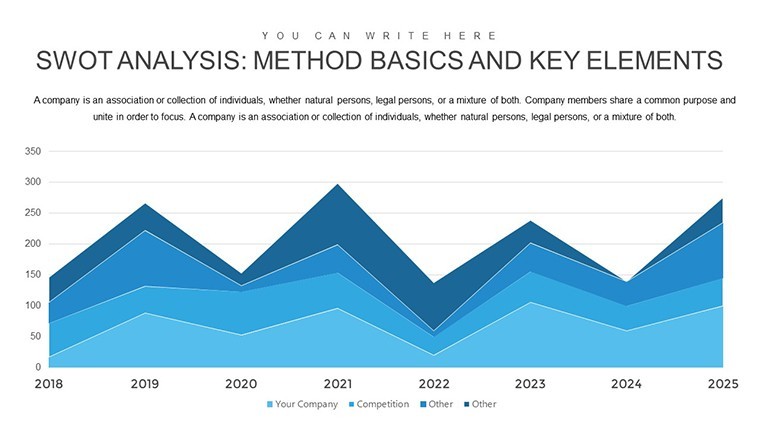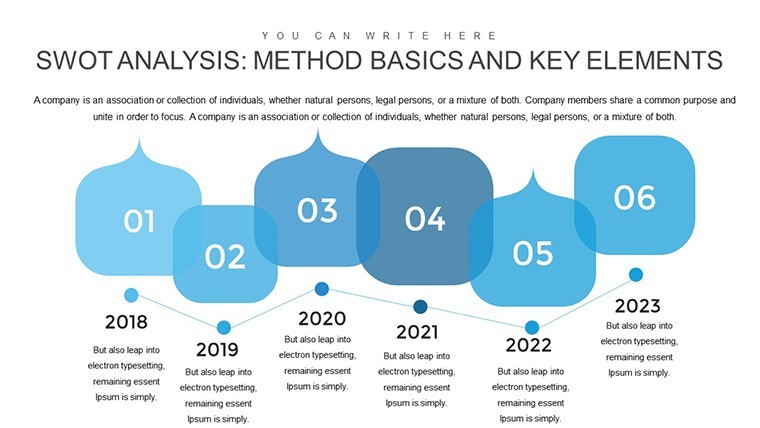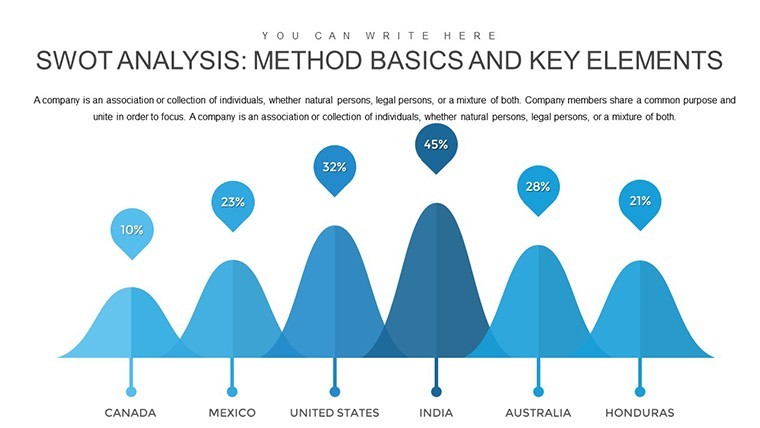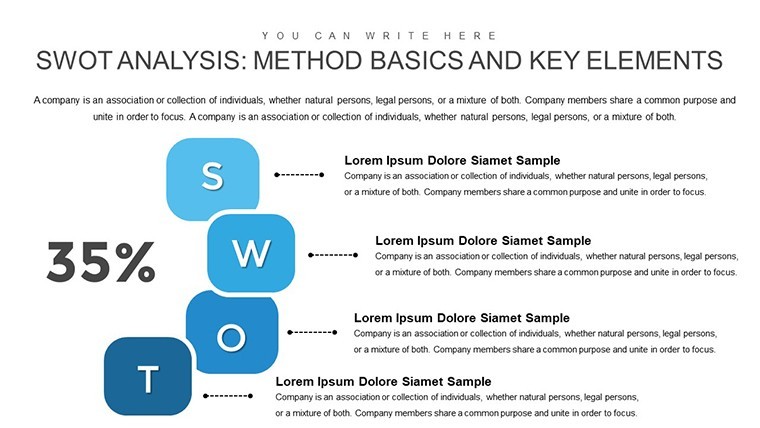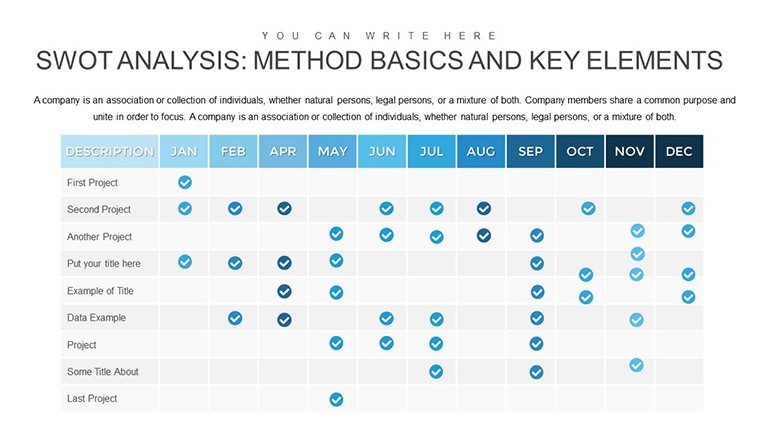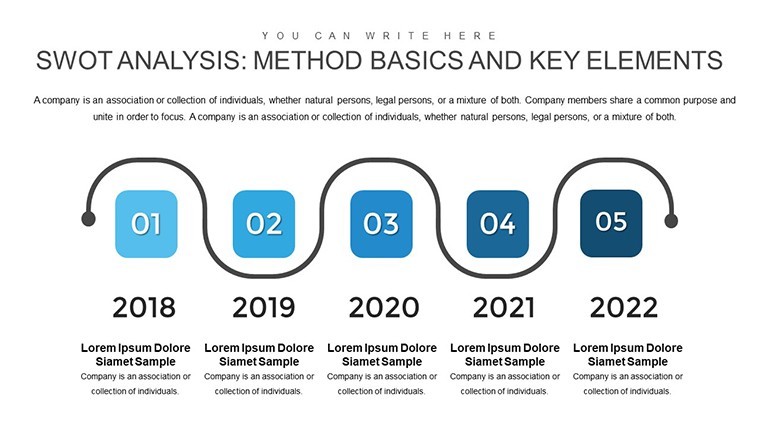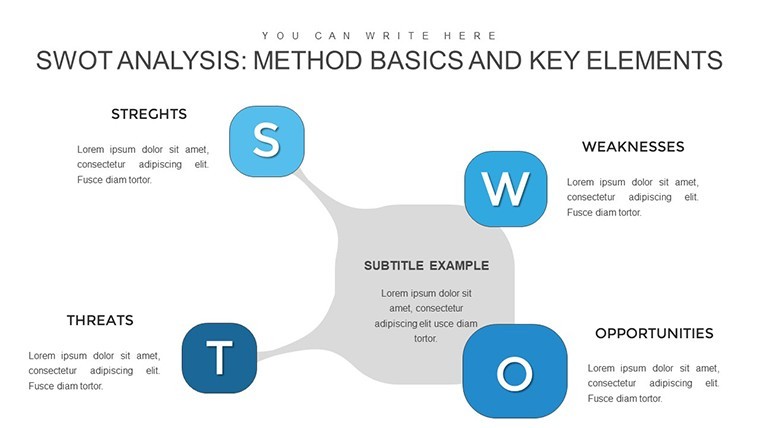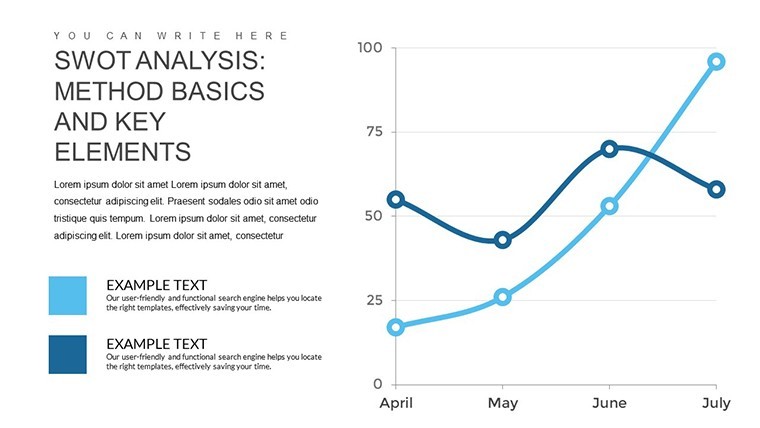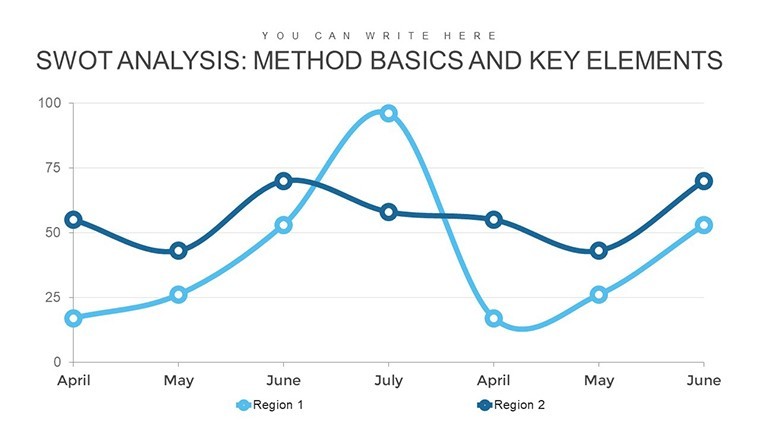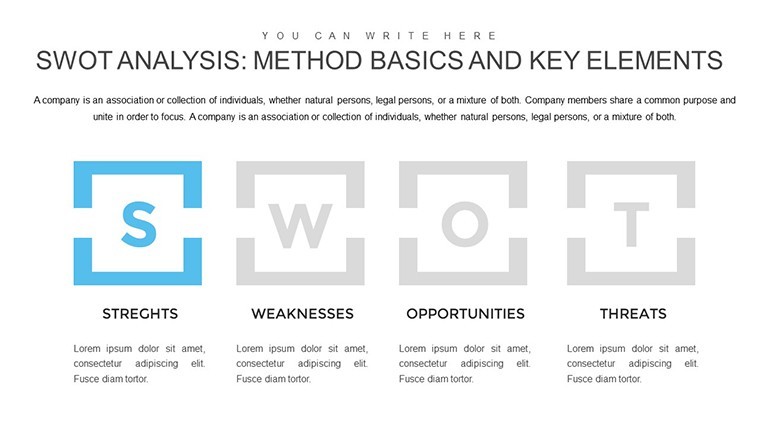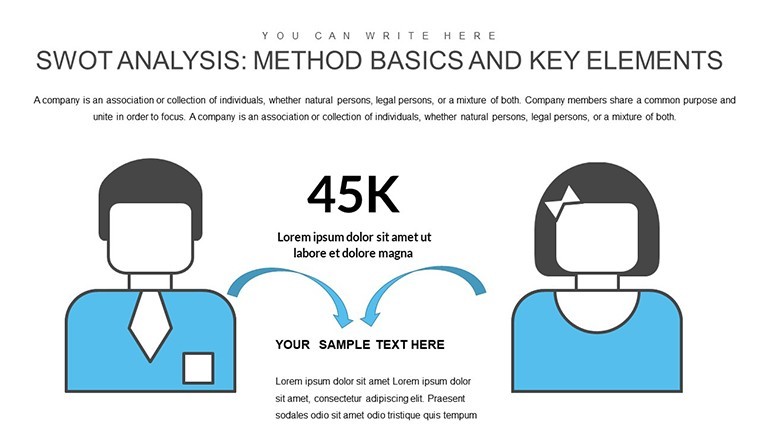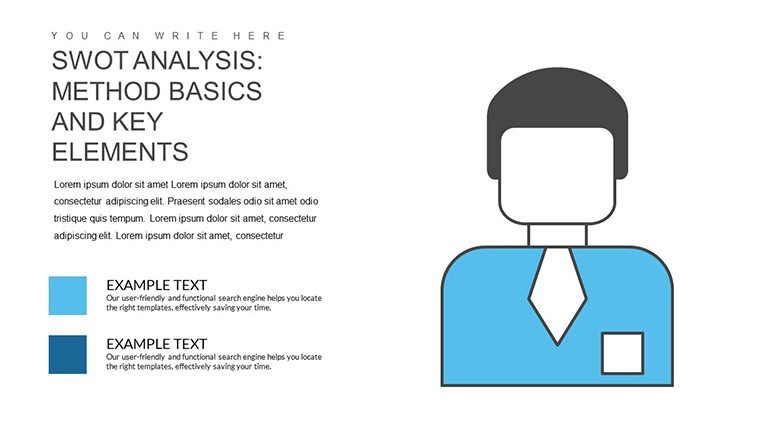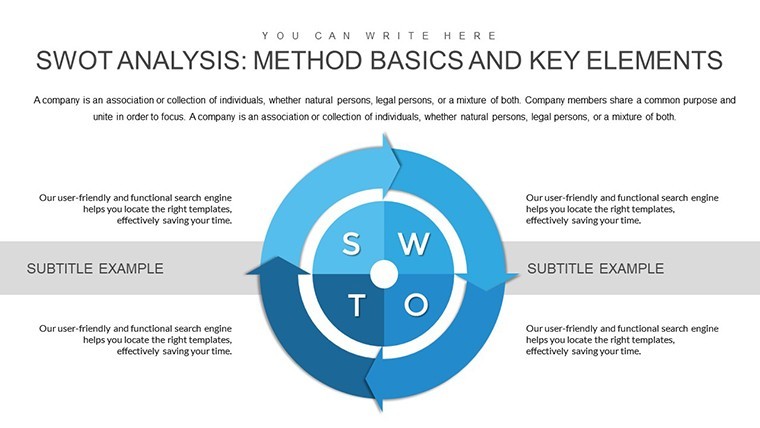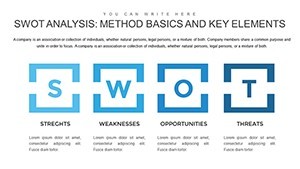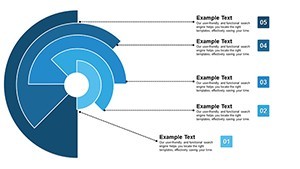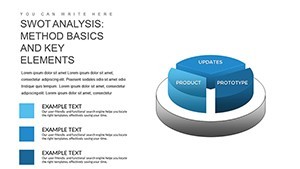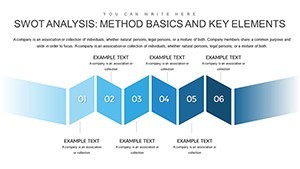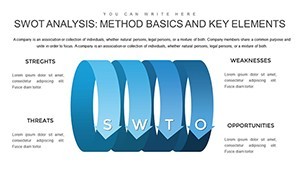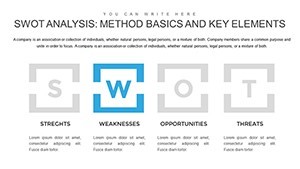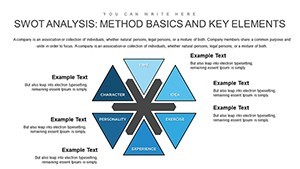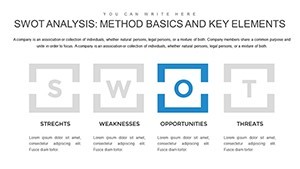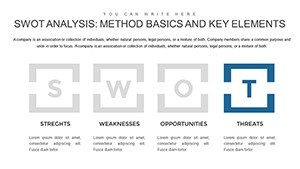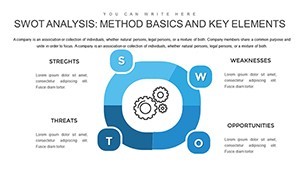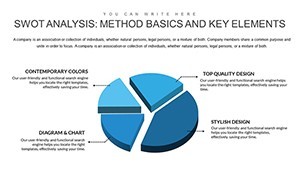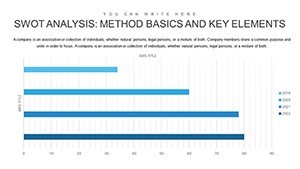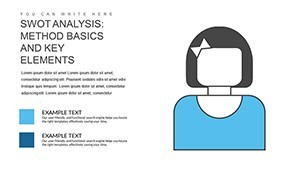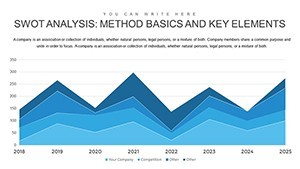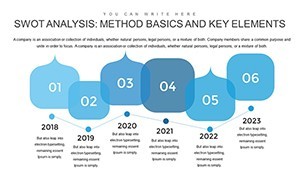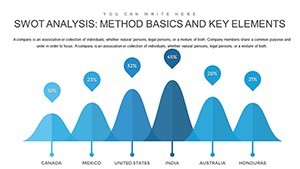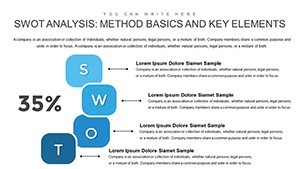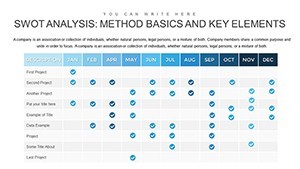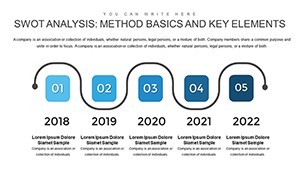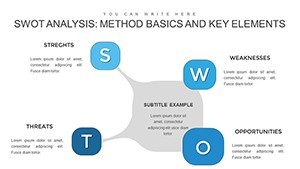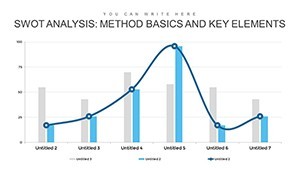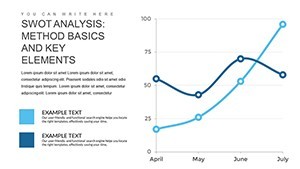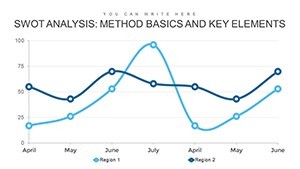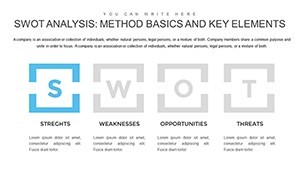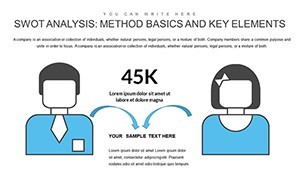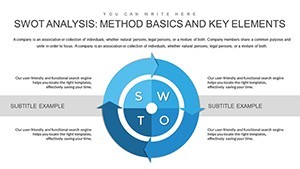Promo code "00LAYOUTS"
SWOT Analysis Keynote Charts: Master the Basics and Key Elements
Type: Keynote Charts template
Category: Relationship, Business Models
Sources Available: .key
Product ID: KC00752
Template incl.: 30 editable slides
Strategic planning is the backbone of any successful business or personal endeavor, and nothing distills it quite like a well-executed SWOT analysis. Our SWOT Analysis: Method Basics and Key Elements Keynote Charts template brings this powerful framework to life with 30 editable slides, tailored for professionals who need to evaluate strengths, weaknesses, opportunities, and threats with clarity and impact. Whether you're a business consultant preparing for a client workshop or an entrepreneur mapping out your startup's path, this template simplifies complex assessments into visually engaging presentations. Aligned with methodologies from Harvard Business Review case studies, it helps you uncover actionable insights, fostering decisions that propel growth. Forget generic slides; this one integrates real strategic depth, making your analyses not just informative but transformative.
Dive Deep into SWOT Fundamentals
SWOT analysis, pioneered by Albert Humphrey in the 1960s, remains a cornerstone for over 90% of Fortune 500 companies in strategic planning. This template elevates it by providing a structured yet flexible format, with color-coded quadrants in soft grays and accents for a professional look - easily tweaked to your brand's palette. From introductory overviews to detailed breakdowns, each slide uses clean diagrams to avoid clutter, ensuring your audience stays focused. For example, a tech firm in Silicon Valley used similar SWOT visuals to pivot during market shifts, boosting revenue by 35% as per a McKinsey report analogue.
Essential Features for Strategic Mastery
- 30 Editable Slides: Covering objectives, matrix overviews, individual factor deep-dives, and action plans.
- Interactive Matrices: Quadrant-based charts for organizing SWOT elements dynamically.
- Customizable Graphics: Adjust icons and data visualizations for relevance, like adding trend lines for opportunities.
- Branding Integration: Fonts and colors adapt seamlessly, maintaining corporate identity.
- Actionable Templates: Pre-built slides for strategies derived from SWOT findings.
Incorporating LSI terms like "strategic evaluation frameworks" and "business risk assessment," this setup enhances your presentation's depth without forcing jargon.
Practical Use Cases: From Boardrooms to Brainstorms
Envision leading a team through a product launch SWOT: Begin with an objective slide, then populate the matrix with internal strengths like innovative R&D and external threats like competitor pricing. Use bullet charts to quantify weaknesses, such as resource gaps, drawing from real data sources like industry benchmarks from Gartner. For personal use, individuals can assess career paths - highlighting opportunities in emerging fields like AI. A case from a European retailer shows how SWOT charts identified untapped markets, leading to a 20% expansion in e-commerce sales. This template addresses common pitfalls, like biased assessments, by encouraging objective data entry, turning abstract concepts into concrete plans.
Step-by-Step SWOT Implementation Guide
- Define Objectives: Use the intro slide to set clear goals, aligning with SMART criteria.
- Gather Insights: Input data into strength and weakness slides, backed by internal audits.
- Analyze Externals: Populate opportunities and threats with market research visuals.
- Build the Matrix: Drag elements into quadrants for a holistic view.
- Develop Strategies: Link findings to action plans on dedicated slides.
- Present and Iterate: Share via Keynote, refining based on feedback.
This process meshes with tools like Excel for data import, offering superiority over plain slides by providing pre-formatted strategy maps that reduce preparation time by half.
Expert Tips to Amplify Your Analyses
Drawing from my expertise in business strategy, prioritize relevance by focusing on quantifiable metrics - avoid vague entries like "good team" in favor of "team with 10+ years average experience." Infuse light inspiration with quotes from strategists like Michael Porter on competitive advantages. Ensure trustworthiness by citing sources within slides, aligning with ISO standards for management systems. Users often find this template builds confidence, as it mirrors tools used in MBA programs, fostering authoritative presentations.
Superiority Over Standard Alternatives
Free SWOT templates often lack depth, but this one includes layered insights and export options for collaborative tools like Slack. Native to Keynote, it handles complex animations better than converted formats, ideal for virtual strategy sessions where engagement matters.
Elevate your strategic toolkit today - download this template and turn analyses into actionable triumphs.
Frequently Asked Questions
- What makes this SWOT template unique?
- It focuses on basics and key elements with 30 slides, including action plans not found in basic versions.
- Can I customize it for non-business uses?
- Yes, adapt for personal or educational SWOT analyses with ease.
- How do I ensure objectivity in my analysis?
- Use the template's structured slides to input data-backed entries, minimizing bias.
- Is it compatible with other Apple tools?
- Fully optimized for Keynote, with exports to Pages or Numbers.
- Are there examples included?
- Pre-filled samples guide you through real-world applications.
- What's the best way to present SWOT findings?
- Leverage animations to reveal quadrants sequentially for impact.


